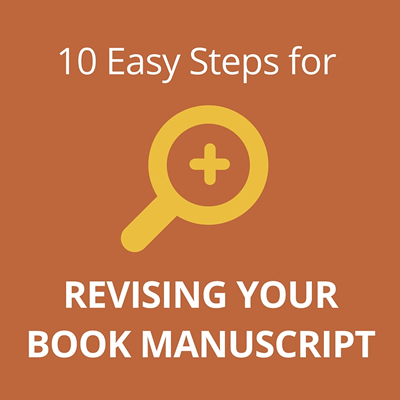 Have you written a sh*tty first draft of your big, beautiful writing project? Congratulations!
Have you written a sh*tty first draft of your big, beautiful writing project? Congratulations!
Now the real fun (work?) begins: REVISING.
Revising is where all that material you dumped from your brain onto the page is shaped and molded into something that truly resembles a book. It’s a critical part of writing any book, and is a phase of the writing journey that is infamous among authors.
“I’m all for the scissors. I believe more in the scissors than I do in the pencil.” Truman Capote
“The best advice I can give on this is, once it’s done, to put it away until you can read it with new eyes. Finish the short story, print it out, then put it in a drawer and write other things. When you’re ready, pick it up and read it, as if you’ve never read it before. If there are things you aren’t satisfied with as a reader, go in and fix them as a writer: that’s revision.” — Neil Gaiman
“By the time I am nearing the end of a story, the first part will have been reread and altered and corrected at least one hundred and fifty times. I am suspicious of both facility and speed. Good writing is essentially rewriting. I am positive of this.” — Roald Dahl
I both dread and love revisions. DREAD because they can be hard and slow moving. Revising a book can feel like making your way across a vast field of thick mud wear flip flops. It can be arduous. And messy. And sometimes it feels as if you’ll never make it to the other side. LOVE because, well, getting to the other side means you’re getting close. You’ve got a solid manuscript. The hardest part of the writing part is behind you.
Still, revising a manuscript can be tough. As with any other pursuit, having a plan for the revision process will go a long way in helping you get through the thickest, muckiest of the mud. Here’s exactly how I do it:
10 STEPS TO REVISING A BOOK MANUSCRIPT
1. Wait a week (or two, or more) before diving in. The more distance you have from the manuscript, the better you’ll be able to go through it with the fresh eyes of a reader. And that means you’ll be poised to notice inconsistencies, leaps of logic, and other content problems you’ll want to address at this stage.
2. Print out the manuscript and work from a hard copy. My preferred method is double-spaced, single-sided, with 1.5-inch margins, so I have plenty of room to make edits and additions on the page.
3. Read the manuscript slowly and aloud. Reading through aloud helps you experience the book as a reader would. It also forces you to move through more slowly, and when revising, the slower the better. What are you looking for? Gaps in logic and issues with flow, areas of overlap, grammatical and spelling errors, not-great writing that can be finessed and strengthened, and other areas in need of improvement.
4. Plan to revise over the course of a set (limited) period of time. Once you dive into revising your book, make this your primary focus until you’ve completed the process, whether this takes a few days or a few weeks. The important thing is that you want to keep your head in the game and eliminate the flux that can result in major disruptions part-way through the book.
5. Be willing to chop, chop, chop. The notion of “killing your darlings” is well-known, and for a reason. Sometimes (many times?) we writers can hold onto content that feels important or special to us but in reality adds no value for the reader. Read with a critical eye and get rid of anything that feels self-indulgent, tangential, or flat-out unnecessary to the reader.
6. Write in additions by hand. As you’re going through the manuscript, write out new content (sentences, paragraph, pages) by hand either in the margins or on the back of pages. The temptation to simply make a note (“Add paragraph on X here”) can be strong, because in the moment it feels easier (and faster). Don’t give in. Force yourself to write it out all out. Once you’ve finished going through the book and begin inputting the edits, you’ll be glad to have done the work already, and it will be more organic than if you have to write it after the fact.
7. Commit to a system for labeling new or rearranged content. In the past, I’ve made the mistake of using simple astericks to denote what goes where, until I realized I didn’t know how to determine which asterisk went where. Now I use letters of the alphabet, and move on to double letters (AA, BB, etc.) when I’ve exhausted the original twenty-six.
8. Take breaks when you need to. If you’re not moving slowly and reading every word and considering it carefully, then there’s no point in revising. Notice when you’ve breezed through a paragraph or two without making any tweaks or comments—you may have switched over into noncritical reader mode, which isn’t really where you want to be. If that’s the case, take a break (nap, go for a walk, call it a day) and dive back in when you can be totally focused.
9. Keep a list of issues that need to be addressed. On a separate piece of paper (or a notebook) keep a running tally of anything that comes up throughout the revision process that needs more attention beyond the edits you’re making this time around (circling back to an interviewee for more information, researching a statistic, design ideas, etc.).
10. Input, spell-check, and print again. When you’re finished going through the revision, you should have a very messy document with all your changes marked within, included material to be added. Now it’s time to go back to the computer and key in all of your changes. When you’re finished, spell check the document to catch any new errors, clean up the formatting (double-spaced, indented paragraphs, page numbers, new pages for new chapters, etc.) and print it out again.
Viola! If you’ve completed the above ten steps you should now be the proud owner of something all authors crave: a SOLID DRAFT. Your work’s not over yet, but you are getting CLOSE to completing your book.
In my next post, I’ll talk about sharing your revised manuscript with a group of Beta Readers.

